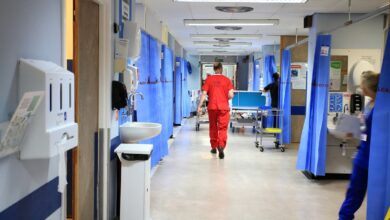Strep A concerns create ‘carnage’ and ‘eyewatering demand’ for the NHS

NHS 111, primary care and A&E services have suffered ‘carnage’ following the recent outbreak in Strep A cases, The Independent has been told.
Senior staff working across services in the NHS have warned that news about the outbreak of Strep A has pushed more parents to use services during a time when demand is already at record levels.
Leading epidemiologists speaking with The Independent have levied a warning that the outbreak, from which at least nine children have died, could be the beginning of the wave, with peaks usually expected closer to spring.
It comes amid rising reports of a shortage of liquid amoxicillin, most commonly used for children needing treatment for the illness. The Independent has been told that the Department of Health and Social Care’s medicines team is considering options for pharmacists and GPs in face of the shortage and demand.
Although Group A Strep is a common strain of bacteria, invasive Group A Strep, which causes the most severe infections, is rare.
The UK is currently experiencing an increase in cases of this infection which has been linked to the deaths of nine children.
Clinicians across the country have warned the news has triggered additional demand, after services now “inundated” that were already seeing high levels of attendances in children due to winter viruses.
One NHS source in London said their A&E had seen “eye-watering” levels of attendance with a record 200 children arriving at their trust’s A&E in a single day – this is double the number seen in 2019.
Another senior source in the south-west warned their GP services had seen a 40 per cent increase in patients within a week.
The crisis within the NHS 111 service, that has seen patients waiting half a day for a callback, has been worsened by the recent Strep A cases.
NHS 111 staff reported they were already struggling under the pressures of demand from callers, warning patient safety is at risk as people are left waiting hours for a clinician to call back.
Speaking with The Independent about the outbreak of Strep A, Dr Shamez Ladhani, a paediatric epidemiologist at St George’s said: “We are seeing the number of cases, the hospitalisations, and deaths are increasing, and that is the time to be concerned because we don’t know how high or how long this wave will be. So the right thing to do is to be concerned, is to raise awareness and try and find ways of reducing that risk as quickly as possible so that we does the cases don’t go too high.”
“We don’t know where this wave is going to end up. So we have to take it very seriously … and quickly.”
He explained the wave had come at an unusual time as was “completely off-season” as it is usually found when cases of chickenpox are circulating at high levels.
Dr Ladhani added currently there is “a sudden and rapid increase in cases and hospitalisation, which aren’t linked with chickenpox. It’s not the typical pattern that we would expect and that’s why it’s concerning. They’re clustered too quickly.
“So our concern is, is the first sign of worse things to come? And we don’t know that so the right thing to do is to raise awareness.”
The paediatric consultant said invasive Strep A, which is causing the acute cases and deaths, is very difficult to diagnose because it can be in children who have a virus and may be recovering then suddenly get very sick.
“I think one of the important things that I think people are missing is there a lot of viruses out there, we don’t always check all the viruses that can make children unwell. So this idea that you can look at one virus and say what’s going on is not so straightforward.”
Dr Simon Clarke, microbiologist for the University of Reading, said that it is not a new strain.
What parents have been advised to do if they have a child is unwell
Advice from UK Health Security Agency on Strep A
The first signs of scarlet fever can be flu-like symptoms, including a high temperature, a sore throat and swollen neck glands (a large lump on the side of your neck).
A rash appears 12 to 48 hours later. It looks like small, raised bumps and starts on the chest and tummy, then spreads. The rash makes your skin feel rough, like sandpaper. The rash will be less visible on darker skin but will still feel like sandpaper.
UK Health Security Agency has told parents to:
Contact NHS 111 or your GP if:
- your child is getting worse
- your child is feeding or eating much less than normal
- your child has had a dry nappy for 12 hours or more or shows other signs of dehydration
- your baby is under 3 months and has a temperature of 38C, or is older than 3 months and has a temperature of 39C or higher
- your baby feels hotter than usual when you touch their back or chest, or feels sweaty
- your child is very tired or irritable
Call 999 or go to A&E if:
- your child is having difficulty breathing – you may notice grunting noises or their tummy sucking under their ribs
- there are pauses when your child breathes
- your child’s skin, tongue or lips are blue
- your child is floppy and will not wake up or stay awake





